Minister for Forest, Environment and Ecology Eshwar Khandre on February 5 officially declared temple town Dharmasthala as “plastic free.” Much effort had gone into it behind the scenes by the Dharmasthala Gram Panchayat as well as Sri Kshetra Dharmasthala. The fight against plastic is no small battle in the rural areas of Karnataka, which are fast losing their “rural” character.
Plastic menace is no longer confined to urban areas and has traversed to the nooks and corners of the country. The undivided Dakshina Kannada district, that hosts several prominent pilgrim and tourist attractions, struggles with this problem. With rural local bodies lacking funds as well as expertise to handle waste, they are often piled up on the flanks of roads, highways and abandoned places.
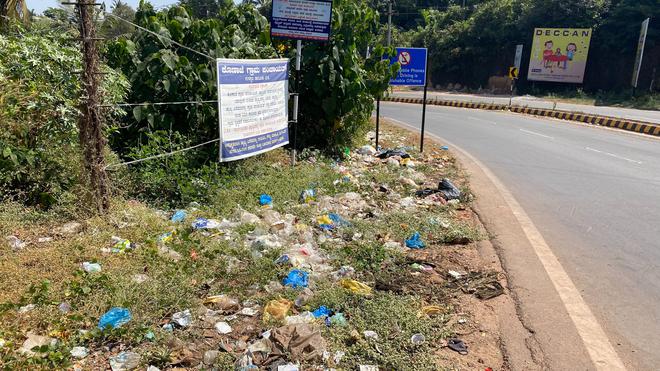
Dharmasthala experiment
Dharmasthala Gram Panchayat decided to fight this by taking steady steps months before the declaration. The menace was largely caused by tourists visiting Dharmasthala in thousands rather than the resident villagers. The Panchayat, therefore, organised sensitisation programmes, workshops etc., for the shopkeepers to dissuade them from selling single-use plastic, said P. Srinivas Rao, the Vice President of the Panchayat.
Panchayat President Vimala, Mr. Rao, members, the panchayat development officer and other officials visited every shop in the town to urge shopkeepers not to pack items in single-use plastic and use cloth bags instead. Similarly, shopkeepers at the Netravathi Bathing Ghat were urged not to sell shampoo sachets to prevent the plastic joining the River, which is the lifeline of Dakshina Kannada.
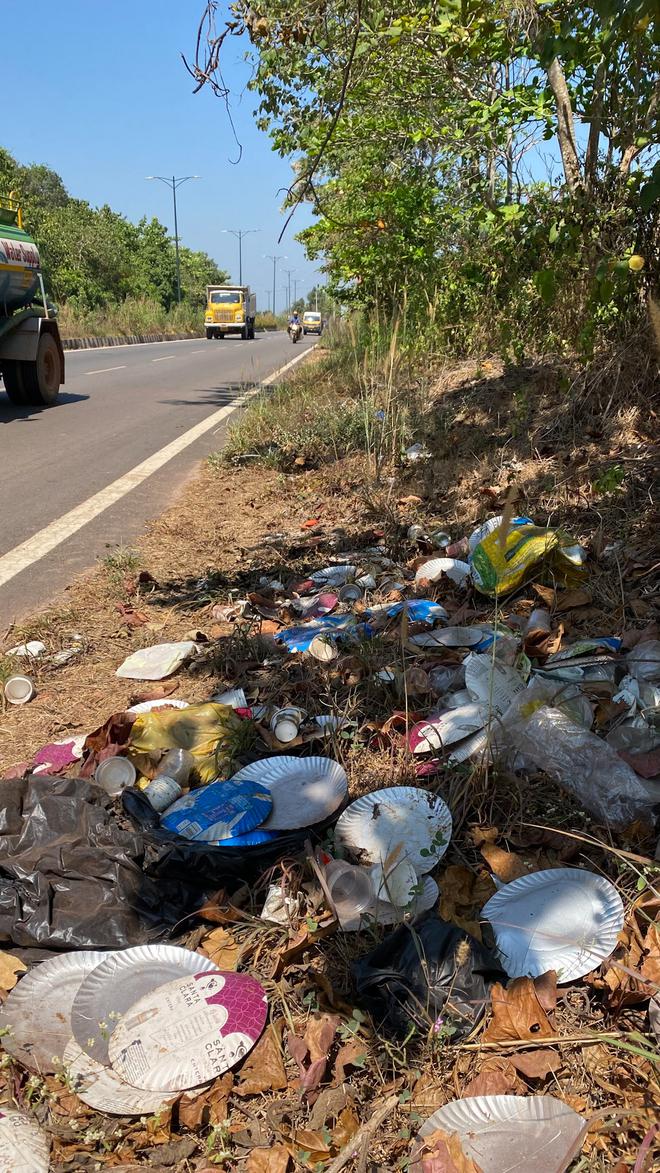
The declaration of “plastic free” village by Mr. Khandre was a small beginning and much more needs to be done to prevent the menace. For once, Mr. Rao says he is unable to understand the logic behind banning single-use plastic while the government continues to allow its production. Until they are available in the market, single-use plastic would continue to thrive, he said. Besides dissuading shopkeepers from packing items in plastic, the Panchayat was also preventing entry of wholesale plastic sellers into the town he said. It has also erected display boards at vantage points announcing the ban on single-use plastic and also cautioning people that they were under CCTV surveillance, Mr. Rao said.
Clothes everywhere
At the Netravathi Bathing Ghat, discarded clothes too contribute to the environment pollution. Devotees who take a dip in the river discard old clothes to flow some belief thereby polluting the water body. Also, hundreds taking bath using bath soaps and shampoo too contributes to the pollution affecting the life in water. Unless people become sensitive to environmental pollution, the practice could not be stopped, though the Panchayat makes frequent appeals to them, Mr. Rao said.
Another major temple town in Dakshina Kannada, Kukke Subrahmanya, that witnesses thousands of footfalls of devotees from across the State, too has been a victim of the plastic menace. Just as Netravathi Bathing Ghat witnesses discarded clothes and plastic material, the Kumaradhara Bathing Ghat too witnesses similar items. The Gram Panchayat here too has asked shopkeepers not to pack items in single use plastic covers.
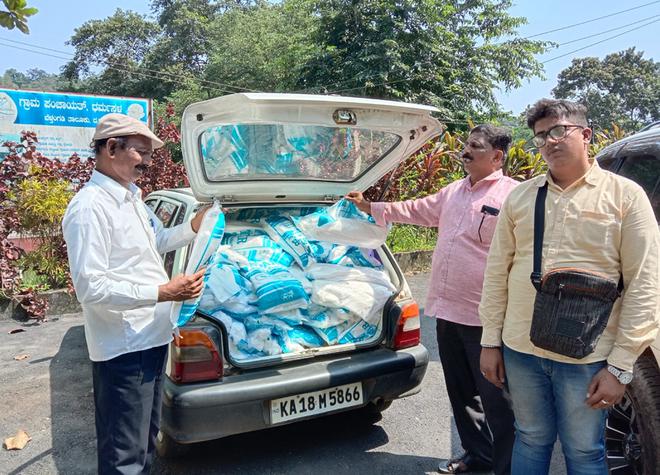
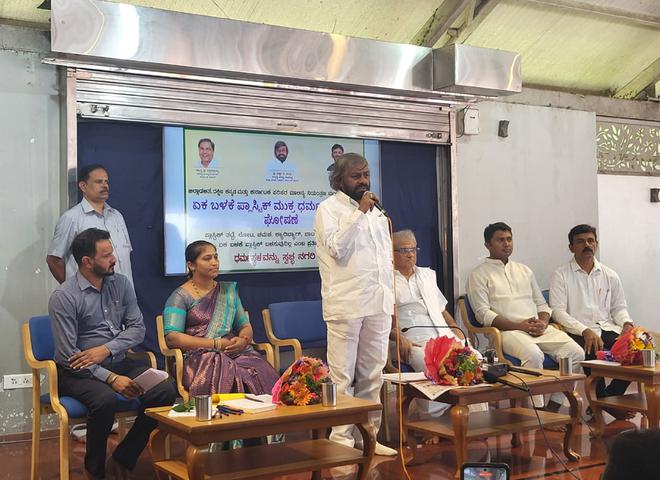
Moving population
Dakshina Kannada Zilla Panchayat CEO K. Anandh said the waste accumulation could be attributed to two main sources - from the residents and from the moving population. While residents, even in villages, have more or less become conscious about the effect of plastic menace and refrain from littering their surroundings, the moving population, mainly comprising tourists, was yet to come to terms, he said.
The CEO gave two stark contrasts of Talapady and Harekala villages. While the former abuts National Highway 66 and shares a border with Kerala, the latter is in the hinterlands. Talapady and areas further North towards Mangaluru witness massive dumping of waste, wet as well as dry, on the flanks of the NH as well as other main roads because of the moving population. Harekala on the other hand has remained almost without any waste dumping because it does not have a floating population.
Material Recovery Facility
Dr. Anandh said the Dakshina Kannada ZP was one among the five selected by the state government to implement dry waste recycling through Material Recovery Facilities (MRF). Under the scheme, the ZP has to map all the 223 gram panchayats in the district to one or the MRF thereby ensuring all the dry waste generated in the district is recycled. Because the GPs were not financially viable to have MRF of their own, the cluster-based approach was being followed, he added.
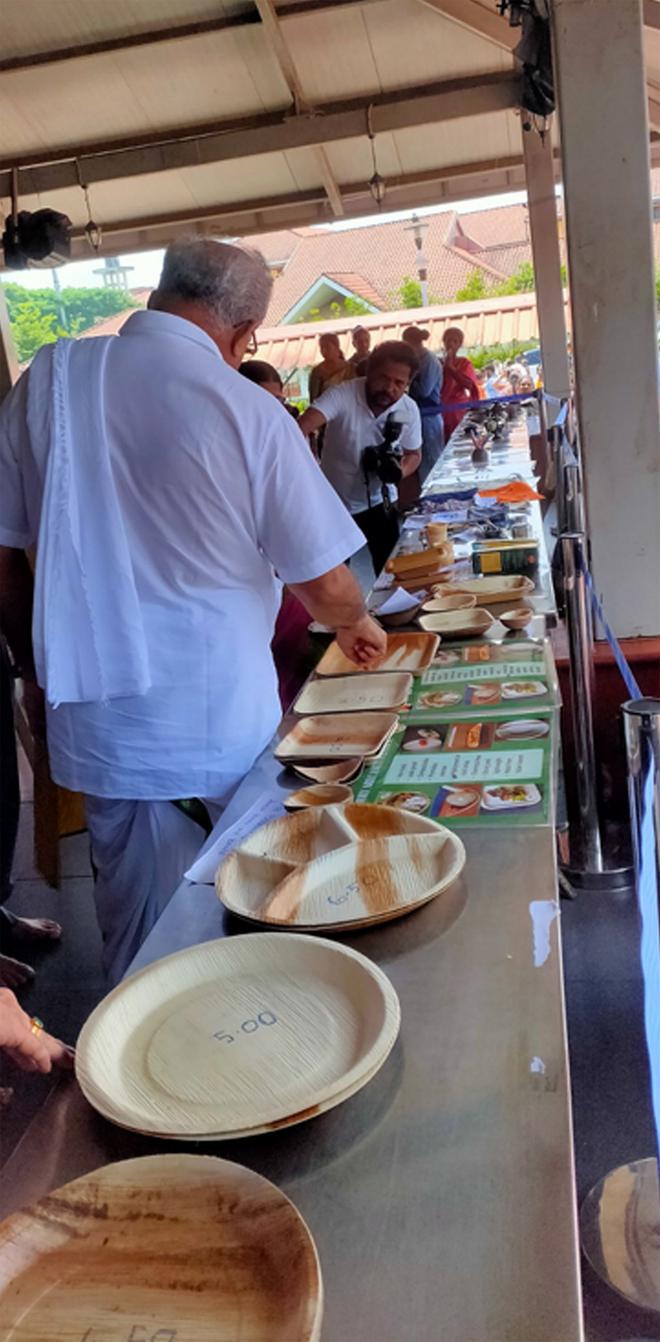
The Zilla Panchayat has already established one such MRF at Thenka Yedapadavu village in Mangaluru taluk that has an installed capacity to process 10 tonnes of dry waste per day. As many as 51 GPs in Mangaluru and Moodbidri taluks were mapped to this facility, the second such set up in Karnataka. The ZP was in the process of establishing three more MRF, one each in Belthangady, Bantwal and Puttur taluks with 7 tonnes per day installed capacity thereby covering all the GPs in the district.
Dr. Anandh said the MRFs could handle 21 kinds of dry waste and recycle all the material that could be recycled. The materials that could not be recycled were compressed into bricks and sent to cement factories as fuel. MRFs work on Zero Cost model, neither the GP pays anything to the operator nor the operator pays anything to the GP. Yet, the facility helps to eliminate the dry waste menace by providing employment to at least 20-25 people in the local region. Initially people were apprehensive to allow such a facility in their backyard. However field visits to MRFs where the waste was scientifically segregated and processed, eliminated their apprehensions.
The Udupi Zilla Panchayat has commissioned Karnataka’s first MRF in rural area, at Nitte village in Karkala taluk that was being operated by a start-up, M/s Mangalal Resources Pvt., Ltd., of Mangaluru. Being in operation since August, 2022, the facility has an installed capacity to handle 10 tonnes of waste per day. As many as 42 GPs in Karkala, Hebri and Udupi taluks were mapped to this MRF.
Still there was some practical difficulties in handling waste, namely, thermocol, diapers, sanitary pads and such other material. Neither can these be processed at MRFs nor can they be burnt at incinerators because of the huge cost involved in the incineration process. One needs to have a different strategy to tackle these wastes differently. It requires special intervention to prevent such material from reaching the Sea, he said.
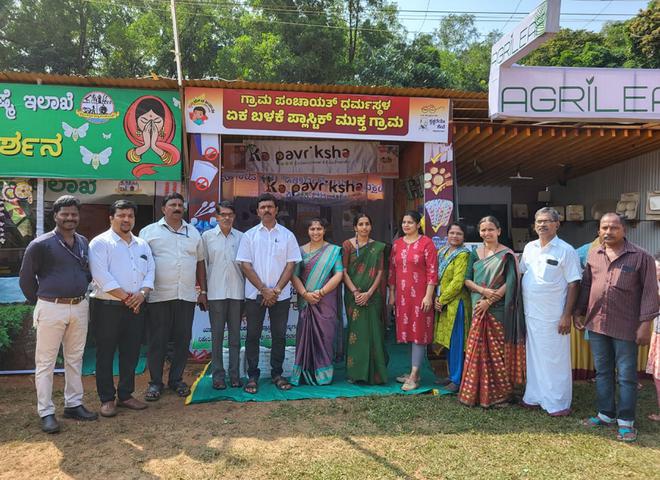
The way forward
Dr. Anandh said it was not an big task to convince villagers not to litter their surroundings and hand over the waste to the collecting agency. However, the local body should have a full-fledged waste collection system and keep the residents assured about the waste collection at regular intervals.
The problem lies with the floating population while the solution could be in the form of rigorous enforcement with the installation of CCTV cameras and imposing hefty penalties for littering. Tourists travelling from one place to another have the habit of leaving trash on road flanks or throwing it to water bodies after having food or refreshment en-route. Local participation too matters in preventing such littering, he said.







